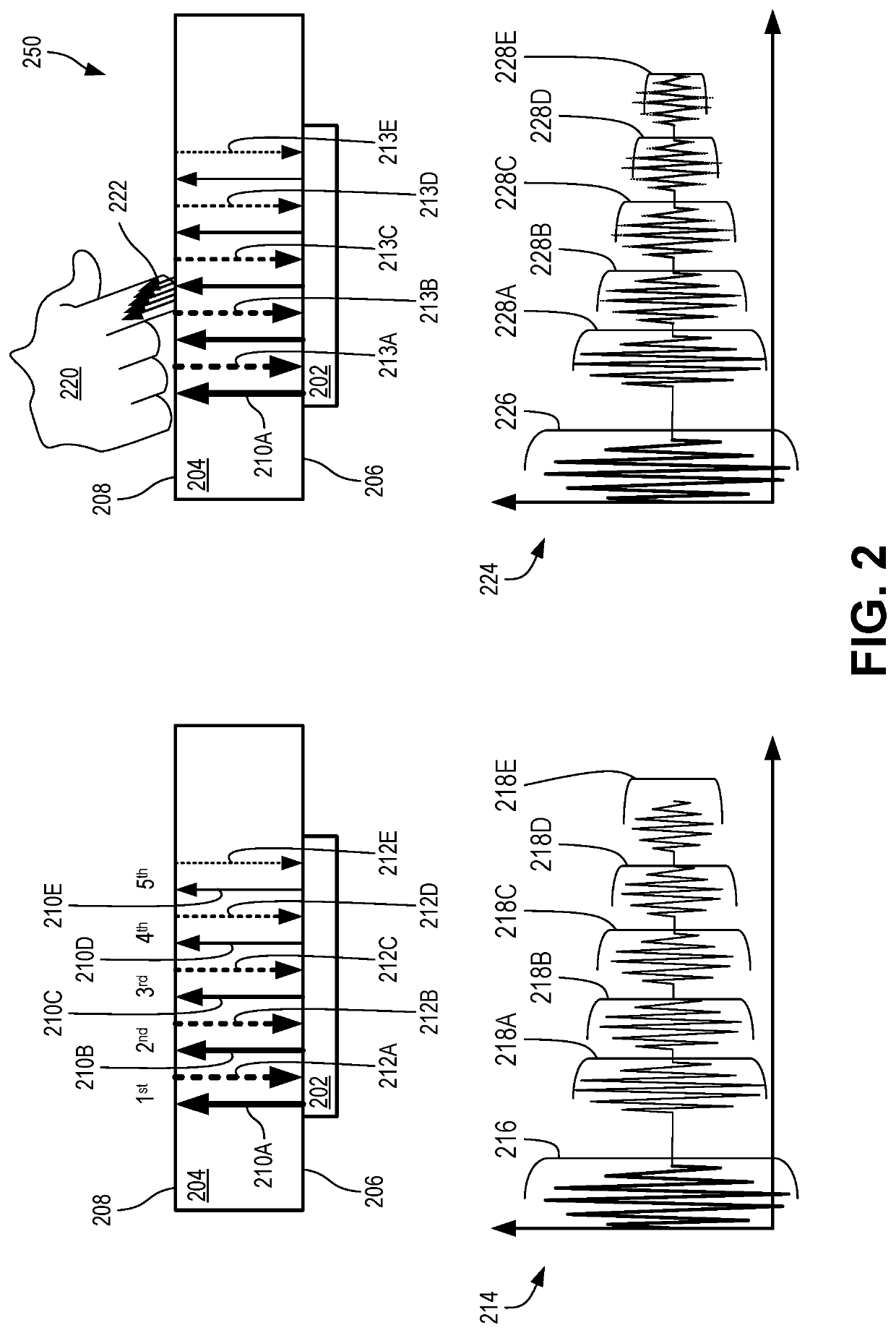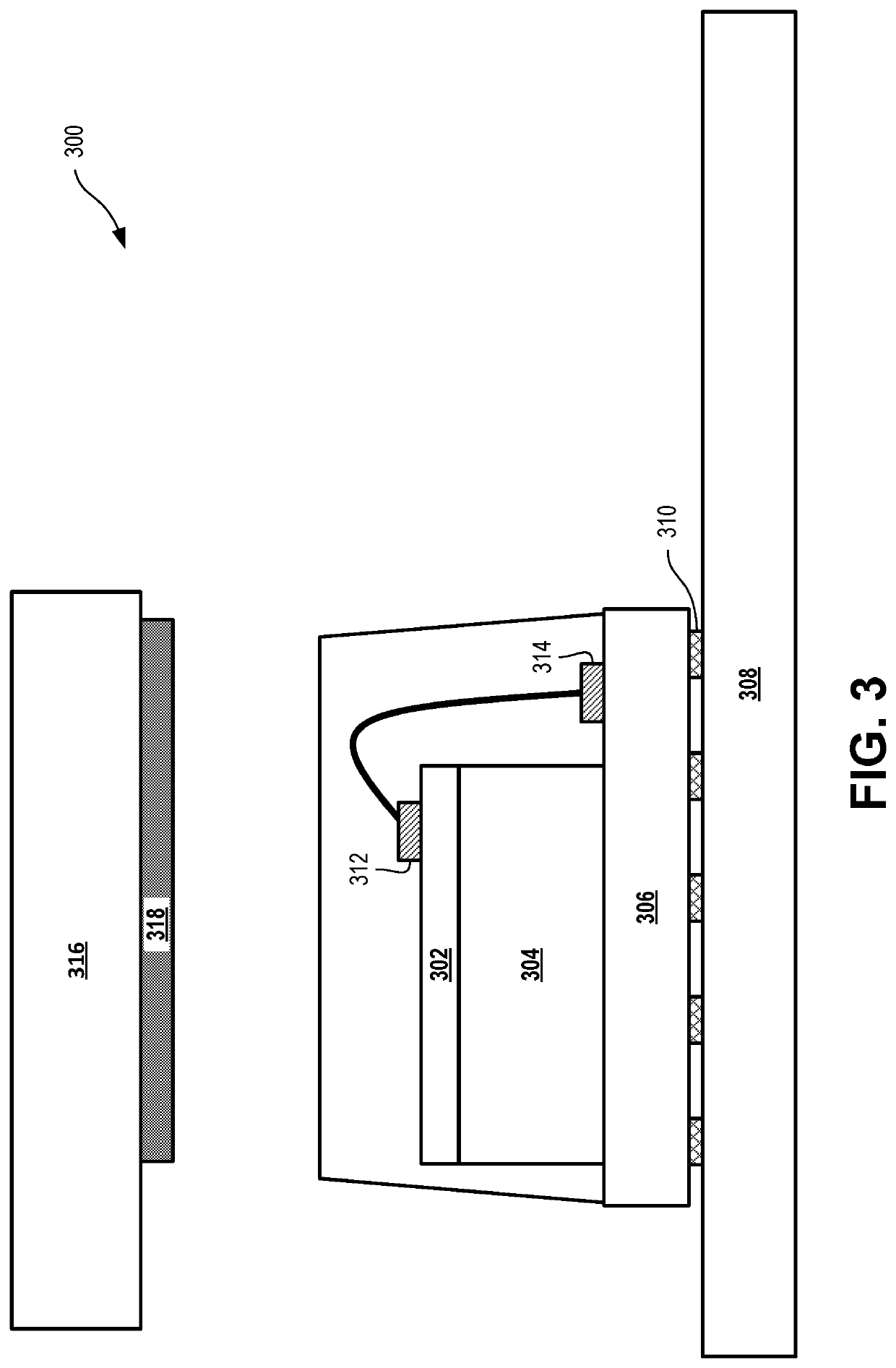Ultrasonic touch and force input detection
a technology of ultrasonic touch and input detection, applied in the direction of dashboard fitting arrangement, instruments, manufacturing tools, etc., can solve the problems of inability to implement present input touch sensing methodologies on metal surfaces, inability to resistive, capacitive or inductive sensing, and limit creative industrial designs, etc., to simplify industrial designs and appearance, improve the detection of touch inputs in hmis
- Summary
- Abstract
- Description
- Claims
- Application Information
AI Technical Summary
Benefits of technology
Problems solved by technology
Method used
Image
Examples
example 2
[0144 is the method of example(s) 1, further comprising: detecting, by the transducer, an additional reflected ultrasonic signal, wherein the additional reflected ultrasonic signal is associated with an echo of the reflected ultrasonic signal; determining an additional amplitude of the additional reflected ultrasonic signal; and updating the amplitude by adding the additional amplitude prior to determining the amplitude is less than the threshold.
[0145]Example 3 is the method of example(s) 1 or 2, wherein the ultrasonic signal comprises a first frequency and a second frequency, and the method further comprises: determining a first amplitude associated with the first frequency and a second amplitude associated with the second frequency; determining the first amplitude and the second amplitude are less than the threshold; and when the first amplitude and the second amplitude are less than the threshold, generating the signal indicating an input touch on the second surface.
example 4
[0146 is the method of example(s) 1-3, wherein the material layer comprises at least one or more of glass, metal, leather, wood, ceramic, plastic, and stone.
example 5
[0147 is the method of example(s) 1-4, wherein determining the amplitude of the reflected ultrasonic signal comprises one of: rectifying and integrating the detected ultrasonic signal; accumulating absolute values of the detected ultrasonic signal; and squaring and integrating the detected ultrasonic signal.
PUM
 Login to View More
Login to View More Abstract
Description
Claims
Application Information
 Login to View More
Login to View More - R&D Engineer
- R&D Manager
- IP Professional
- Industry Leading Data Capabilities
- Powerful AI technology
- Patent DNA Extraction
Browse by: Latest US Patents, China's latest patents, Technical Efficacy Thesaurus, Application Domain, Technology Topic, Popular Technical Reports.
© 2024 PatSnap. All rights reserved.Legal|Privacy policy|Modern Slavery Act Transparency Statement|Sitemap|About US| Contact US: help@patsnap.com










